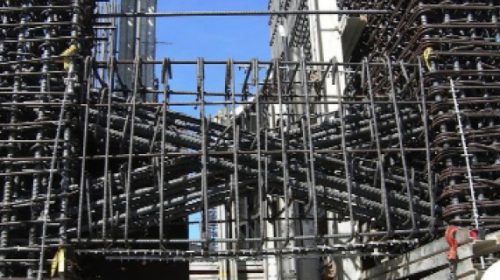The American Concrete Institute Foundation’s “Evaluation of Seismic Behavior of Coupling Beams with Various Types of Steel Fiber Reinforced Concrete” research supports a prospective building code design option translating to simplified and more straightforward construction, plus schedule, labor and material cost savings.
| The Concrete Research Council investigation demonstrates the potential of steel reinforcing fibers in shear wall coupling beams traditionally requiring diagonal assemblies of conventional rebar. Research findings were presented at the 16th World Conference on Earthquake Engineering, staged earlier this year in Santiago. |
“Linking coupling beam drift and shear stress capacity to [fiber reinforced concrete] bending performance obtained through a standard ASTM test is expected to further facilitate adoption of the proposed fiber reinforced concrete coupling beam design,” says principal investigator Gustavo Parra-Montesinos of the University of Wisconsin, Madison. “Such a link could also serve as the basis for future design provisions to be proposed to ACI Committee 318, Structural Concrete Building Code.”
Coupling beams between special structural walls (shear walls) are typically reinforced with diagonal bars that are “woven” together with dense transverse reinforcement, he adds. Rooted in 1960s and 1970s research, the “woven” design is difficult to construct. ACI Foundation’s Concrete Research Council and allied interests funded the investigation to evaluate FRC use as an alternative to diagonal bars in coupling beams.
A total of six FRC mixtures were evaluated, using three types of hooked steel fibers and three different fiber volume fractions. The material properties of the various FRCs were evaluated using four-point bending, direct tension and compression tests. Eight FRC coupling beams were tested under large displacement reversals. The experimental data from the research were used to develop design guidelines for FRC coupling beams linked to material performance criteria. The proposed coupling beam design results in less congested reinforcing bar configurations, benefitting owners, designers and contractors. — www.concreteresearchcouncil.org
